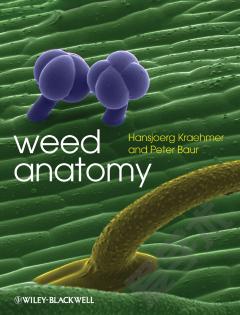Weed Anatomy
Weeds affect everyone in the world by reducing crop yield and crop quality, delaying or interfering with harvesting, interfering with animal feeding (including poisoning), reducing animal health, preventing water flow, as plant parasites, etc. Weeds are common everywhere and cause many $ billions worth of crop losses annually, with the global cost of controlling weeds running into $ billions.The anatomy of plants is generally well understood, but the examples used for explanations in most books are often restricted to non-weed species. Weeds have many features that make them more competitive, for example enabling them to more quickly recover after herbicide treatment. Some of these adaptations include rhizomes, adapted roots, tubers and other special structures. Until now no single book has concentrated on weeds anatomical features. A comprehensive understanding of these features is, however, often imperative to the successful implementation of many weed control measures.Beautifully and comprehensively illustrated, in full colour throughout, Weed Anatomy provid
{{comment.content}}








 京公网安备 11010802027623号
京公网安备 11010802027623号